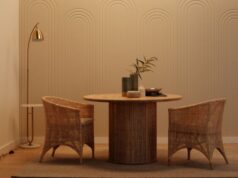
Known by many names, these types of bricks are easy to build with and are very commonly used to make building walls in Australia.

What are besser blocks?
Also commonly known as concrete masonry units, breeze blocks, foundation blocks or cinder blocks, besser blocks are a large type of brick made from concrete. The bricks are usually made with a series of hollow tubes running through them, which helps to cut down on the weight of the concrete and improve the insulating properties of the bricks.
The concrete in a besser block is typically blended with other materials before it is cast, in order to manipulate the resulting block’s density. For example, concrete can be blended with ash to create a block that might be used to construct relatively light but stable levels in a multi storey building. To achieve a higher density block, sand or gravel can be mixed with the concrete. High density blocks can help shield radiation or improve soundproofing.
Why build with besser blocks?
The low price, durability, insulating properties and structural reliability of the besser block can make them a great option for construction. They save on steel and mortar and their hollow tunnels can be used to house plumbing and wires. Outside of large scale building developments and housing commission homes though, besser blocks remain a relatively unpopular choice for external walls. This is most likely due to the lack of aesthetic appeal in the average concrete home.
Even with the introduction of besser blocks cast to look like limestone, and although external and internal walls can be rendered, painted or clad, Australians just don’t seem to like living in besser block homes. This may cause issues when you sell your home.
How are besser blocks installed?
A wall made with besser blocks is usually constructed in a similar fashion to other masonry walls. A solid foundation is first established and then the bricks are laid out in an overlapping grid pattern, which helps to stabilise the wall. Mortar is spread onto each brick before it is laid, which acts as an adhesive to ‘glue’ the wall together in one piece. The result is a solid wall which should have an excellent load bearing capacity. If well constructed, the blocks should also provide a tight building envelope which prevents wind and weather entering the house, but allows moisture to escape.
Unfortunately some homes built with besser blocks do have a tendency to experience internal moisture problems. This is due to a lack of a properly functioning vapour barrier. Likewise, some of the more dense besser blocks can be difficult to install due to their weight.
Maintenance
Walls should be washed and an inspection of visible mortar and any rendering should be performed at least once a year. Any damaged mortar or render (or other external finish or cladding) should be repaired. Otherwise, besser blocks should need very little maintenance.
|
Advantages
|
Disadvantages
|





